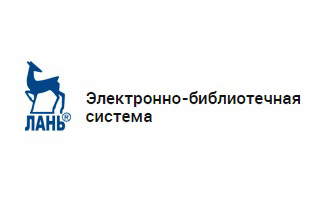 |
|
| ISSN 0536-1028 (Print) ISSN 2686-9853 (Online) |
Contacts
Mailing address:
Ural State Mining University
Kuibysheva Street 30,
620144, Ekaterinburg, Russia
Phone: +7 (343) 257-65-59 (Georgieva Natalia Viktorovna, executive secretary)
Email: This email address is being protected from spambots. You need JavaScript enabled to view it.
Editorial address: Ekaterinburg, Universitetsky Lane 7, of. 4101
|
ISSN 0536–1028 (Print) Minerals and Mining Engineering = Izvestiya vysshikh uchebnykh zavedenii. Gornyi zhurnal (up to No. 8–2021 known as News of the Higher Institutions. Mining Journal) is a peer-reviewed scientific and technical journal that has been published since 1958. The journal is issued 6 times a year and distributed in Russia and abroad. The papers are published in the Russian and English languages. Founder and publisher: Federal State Budgetary Educational Institution of Higher Education Ural State Mining University. Editor-in-Chief: NIIAZ G. VALIEV |
The mission of the journal is to maintain readers’ interest in original research and innovative approaches to all sorts of issues concerning mining and mining education and to disseminate best Russian and foreign theoretical and applied research.
Goals:
|
|
To produce knowledge in the field of mining. |
|
|
To cover a range of current mining issues. |
|
|
To disseminate information about advanced research. |
|
|
To enable scientists, professors, specialists, and PhD students to state their views of and solutions to problems of mining and education. |
|
|
To publish the results of R&D and educational work of Russian and foreign specialists on current problems of mining. |
|
|
To exchange up-to-date research results in the field of mineral extraction and processing. |
OBJECTIVES:
- To give authors the opportunity to publish the results of basic and applied research in different fields of mining.
- To assist young scientists in preparing high-quality publications.
- To inform specialists and the community of current trends in studying and improving the flow processes of mining production, ecology, safety, and higher education.
- To draw attention to the most topical, promising, and interesting directions in scientific research.
- To improve the accessibility and transparency of the journal in Russia and abroad.
- To be included in international databases.
The journal’s target audience includes expert community representatives, scientists, professors, PhD students, and specialists interested in a range of current problems in mining and education.
|
The greater part of the Journal’s third issue this year is devoted to works of our colleagues from AO Uralmechanobr Scientific Research and Design Institute of Mineral Processing and Dressing. This year Uralnechanobr celebrates its 95th Anniversary and we heartily congratulate its team, wishing continued professional development and new interesting projects! Uralmechanobr and the Ural State Mining University have always been closely interrelated. M. F. Ortin, Head of the Mineral Processing Department of the Sverdlovsk Mining Institute (now UrSMU), became the first director and chief scientific officer of Uralmechanobr. The staff of the institute was replenished with graduate ore dressers from the Sverdlovsk Mining Institute. Researches planned for publication in no. 3–2024 Minerals and Mining Engineering include a review on the history of AO Uralmekhanobr creation and development by K. V. Bulatov and V. N. Zakirnichnyi, a research on the details of obtaining ilmenite and leucoxene concentrates from titanium-zirconium sands of the Shokash deposit in Northern Kazakhstan, authored by G. I. Gazaleeva and colleagues, an article on the peculiarities of copper-zinc ore material composition at the deep horizons of the Tarnier deposit by S. V. Mamonov and a team of authors, and many others. Planned publication of no. 3–2024 is June 20, 2024 |
Publication schedule for 2023
|
№ 1 |
№ 2 |
№ 3 |
№ 4 |
№ 5 |
№ 6 |

This work is licensed under a Creative Commons Attribution 4.0 International License.













